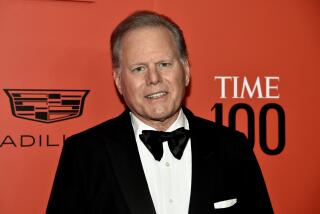Clear Channel Cites Costs in Profit Drop
- Share via
Radio station operator Clear Channel Communications Inc. said Tuesday that its second-quarter earnings fell more than 10% as higher operating costs offset a gain in revenue.
Net income fell to $197.5 million, or 39 cents a share, from $220.7 million, or 40 cents, a year earlier.
Analysts were expecting per-share profit of 41 cents, according to a survey by Thomson Financial.
Year-over-year revenue rose 7% to $1.85 billion, exceeding analysts’ estimates of $1.8 billion.
Clear Channel shares fell 54 cents, or 1.9%, to $28, near the bottom of their 52-week range of $27.34 to $32.84.
To stem the loss of listeners to satellite radio and CDs, San Antonio-based Clear Channel has cut back on commercials but is charging advertisers more -- a strategy dubbed “less is more.”
Revenue from radio broadcasting, the company’s largest segment, rose 6% to $983.5 million. Advertising sales grew at its 1,200 stations, led by the automotive, services and retail sectors.
But Clear Channel’s direct operating and overhead expenses for radio increased 6% from the same period last year, in part because of increases for new programming, sales and distribution initiatives.
Clear Channel’s outdoor advertising business, which sells billboard and bus-stop ads, had revenue of $748.4 million, up 9% from a year earlier.
Expenses rose more than 7%, partly because of increases in site-lease costs, the company said.
Chief Executive Mark P. Mays said the company carried momentum into the new quarter.
“Our radio division’s performance surpassed our expectations and once again far outpaced the industry,” he said. “Our top 25 radio markets performed particularly well, generating the highest percentage growth of any of our markets. And our outdoor business continued the trend of posting consistently strong revenues and profits.”
Fred Moran, media stock analyst for Houston-based Stanford Group, said the second quarter’s radio revenue growth proved the success of the “less is more” strategy.
“Advertisers feel like they are getting more for their money because ratings are climbing while competing radio stations are in decline,” he said. “And the evidence is that the growth has turned strongly positive despite the radio industry still struggling.”
More to Read
The biggest entertainment stories
Get our big stories about Hollywood, film, television, music, arts, culture and more right in your inbox as soon as they publish.
You may occasionally receive promotional content from the Los Angeles Times.








